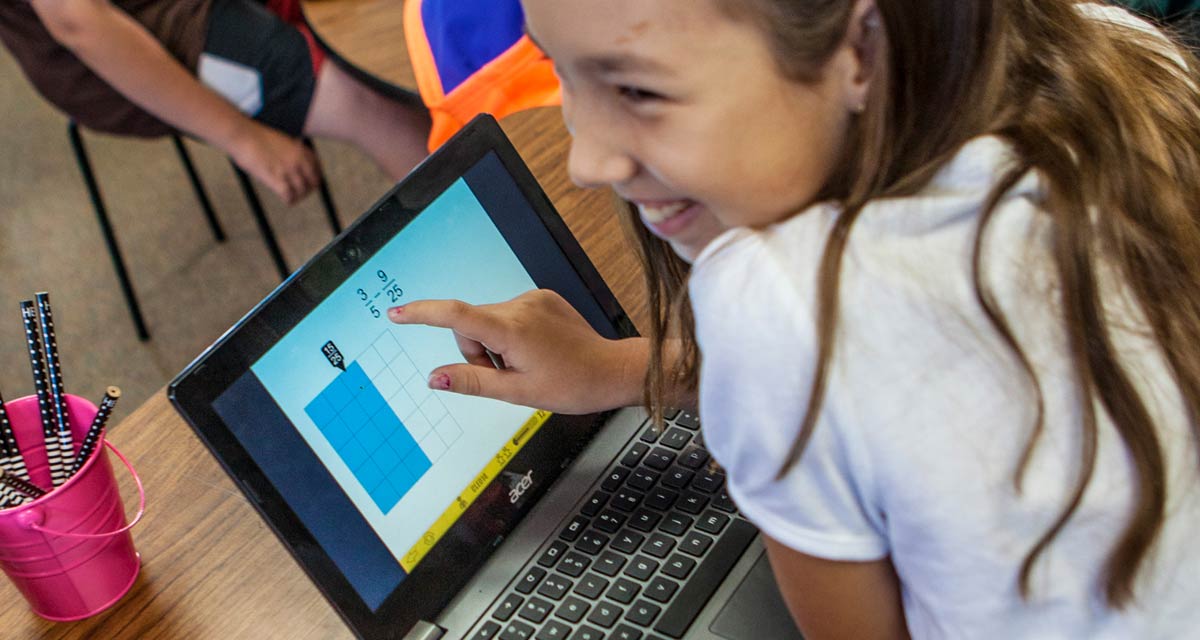
As the new school year kicks off, you might be wondering how to help your students get excited about participating in math lessons. The first few weeks of school are critical to building engagement in your classroom, so now is a perfect time to explore different ways you can create an environment that supports effective mathematical discourse.
Mathematical discourse uses written and spoken communication to help students describe their thinking when solving a problem. When students engage in these types of constructive discussions with a teacher or their peers, it triggers a neural process called the perception action cycle (PAC).
VP of Content Nigel Nisbet explains the Perception Action Cycle
In a nutshell, the PAC is a continuous feedback loop that helps our brains identify cause and effect relationships by predicting, testing, and analyzing outcomes. Mathematical discourse is a crucial component of generating this feedback as it helps students express their thinking and mathematical reasoning at each stage.
If you’re looking for ways to activate the PAC so your students can build conceptual understanding and engage in deeper math discourse, these facilitation strategies will help you hit the ground running in the new school year.
Everyone experiences some level of math anxiety, especially when asked to share ideas aloud. Students need to realize that wrong answers are not a reflection of their ability; instead, they are stepping stones that will enhance their understanding of the material. The goal is to help them communicate their thinking so you or the class can pinpoint any issues. The case might be that they are not that far off from arriving at the correct answer. Perhaps it was a simple calculation error—not a misunderstanding of the concept itself.
That’s why it’s important to establish a safe environment where students won’t feel judged for sharing their ideas and making mistakes. Here are some ways you can make your students comfortable with engaging in math discourse right off the bat:
An effective facilitator asks purposeful and effective questions to support student thinking as they solve problems. This strategy is not a checklist of questions to ask but instead focuses on why we ask the questions in the first place.

Our mathematicians compiled a list of practical facilitation questions to use during the stages of the problem-solving process. Teachers can ask these questions at various points in any ST Math lesson to help jumpstart math discourse. Start with questions like:
We can learn so much by listening to others, so help students work on developing their active listening skills to allow equal space for others to talk. Emphasize nonverbal cues like eye contact and body language to communicate that they are engaged when someone else is speaking. Remember, everyone processes information at different speeds and levels, so it’s also important to allow for enough time to internalize what is being said and respond. Here are some simple ways to promote active listening in your classroom:
Once a student understands how to solve a problem, we must connect this knowledge to their existing schemas to deepen their understanding of the concept. This can be done by asking questions that stretch student thinking to help them apply their learning to novel situations:

Teaching students how to work with others in an academic setting will help expand their thinking and prepare them for the real world. ST Math Puzzle Talks are a great way to initiate collaboration. Similar to number talks or math talks, the goal is to get groups of students to communicate and deepen their understanding of mathematics together.
Puzzle Talks leverage the power of the visual models and manipulatives inherent in ST Math, and use language to support the learning experience. You can try a Puzzle Talk lesson in your class using one of our freely available ST Math games and the guidelines provided here.
Facilitation of student math discourse involves planning around desired learning outcomes, thinking through the questions, and facilitating interactions with your students. By focusing on the process, facilitation allows students and teachers to co-lead the learning. Students develop agency and accountability because they understand that their thinking is essential. It is what will lead them to a deeper understanding. The above strategies are thinking-driven, not answer-driven. That distinction is what will ensure that the facilitation that occurs in the classroom is effective and impactful.

Parker Erickson was MIND’s Content and Community Specialist. As a digital storyteller, Parker is passionate about building strong communities through technology and social media. Off the clock, you can find him buried in the latest issue of The New Yorker or experiencing different cultures through food.
Comment